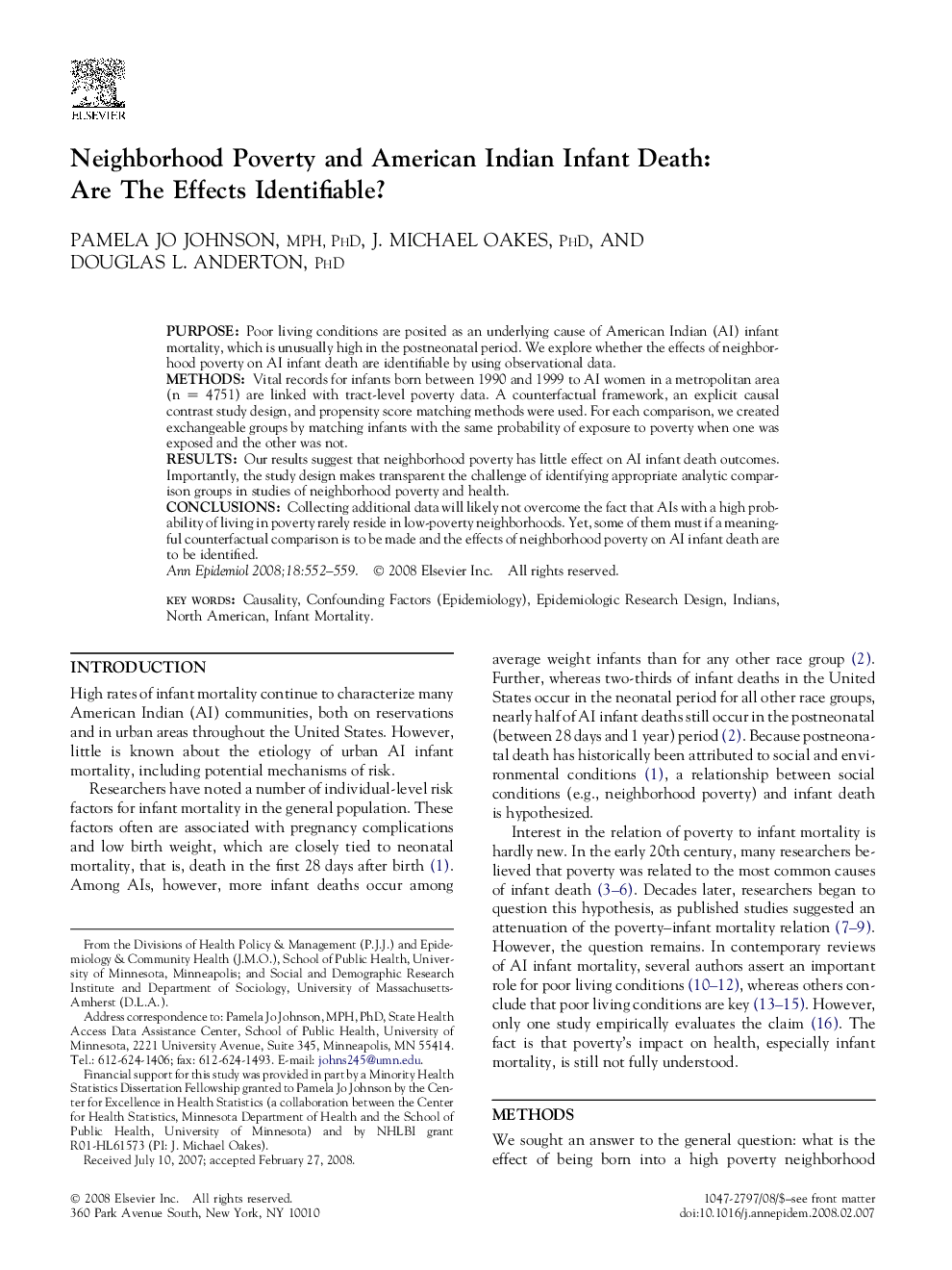| Article ID | Journal | Published Year | Pages | File Type |
|---|---|---|---|---|
| 3445462 | Annals of Epidemiology | 2008 | 8 Pages |
PurposePoor living conditions are posited as an underlying cause of American Indian (AI) infant mortality, which is unusually high in the postneonatal period. We explore whether the effects of neighborhood poverty on AI infant death are identifiable by using observational data.MethodsVital records for infants born between 1990 and 1999 to AI women in a metropolitan area (n = 4751) are linked with tract-level poverty data. A counterfactual framework, an explicit causal contrast study design, and propensity score matching methods were used. For each comparison, we created exchangeable groups by matching infants with the same probability of exposure to poverty when one was exposed and the other was not.ResultsOur results suggest that neighborhood poverty has little effect on AI infant death outcomes. Importantly, the study design makes transparent the challenge of identifying appropriate analytic comparison groups in studies of neighborhood poverty and health.ConclusionsCollecting additional data will likely not overcome the fact that AIs with a high probability of living in poverty rarely reside in low-poverty neighborhoods. Yet, some of them must if a meaningful counterfactual comparison is to be made and the effects of neighborhood poverty on AI infant death are to be identified.
